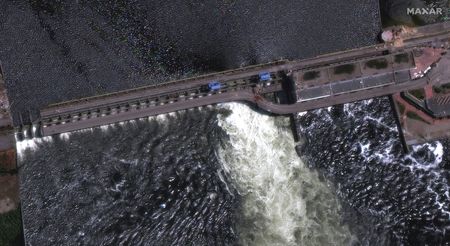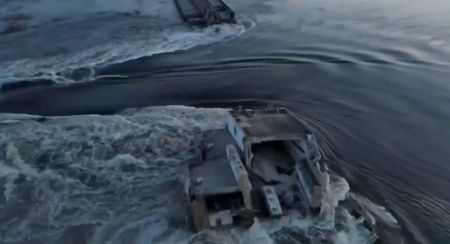(Reuters) – Evidence suggests this month’s destruction of the huge Kakhovka dam in a Russian-controlled area of Ukraine resulted from an inside explosion set off by Russia, the New York Times said.
Citing engineers and explosive experts, the newspaper said on Friday that its investigation found evidence suggesting an explosive charge in a passageway running through the dam’s concrete base detonated, destroying the structure on June 6.
“The evidence clearly suggests the dam was crippled by an explosion set off by the side that controls it: Russia,” the Times said.
Separately, a team of international legal experts assisting Ukraine’s prosecutors in their investigation said in preliminary findings on Friday it was “highly likely” the collapse in Ukraine’s Kherson region was caused by explosives planted by Russians.
The Kremlin accuses Kyiv of sabotaging the hydroelectric dam, which held a reservoir the size of the U.S. Great Salt Lake, to cut off a key source of water for Crimea and distract attention from a “faltering” counter-offensive against Russian forces.
Ukraine accuses Russia of blowing up the Soviet-era dam, under Russian control since early days of its invasion in 2022, unleashing floodwater across a large swath of the battleground, destroying farmland and cutting off water supplies to civilians.
Reuters could not independently verify the claims about the explosion’s cause.
The Times cited engineers as saying only a full examination of the dam after the water drains from it can establish the sequence of events leading to the destruction.
“Erosion from water cascading through the gates could have led to a failure if the dam were poorly designed, or the concrete was substandard, but engineers called that unlikely,” the newspaper said.
(Reporting by Lidia Kelly in Melbourne; Editing by William Mallard)






